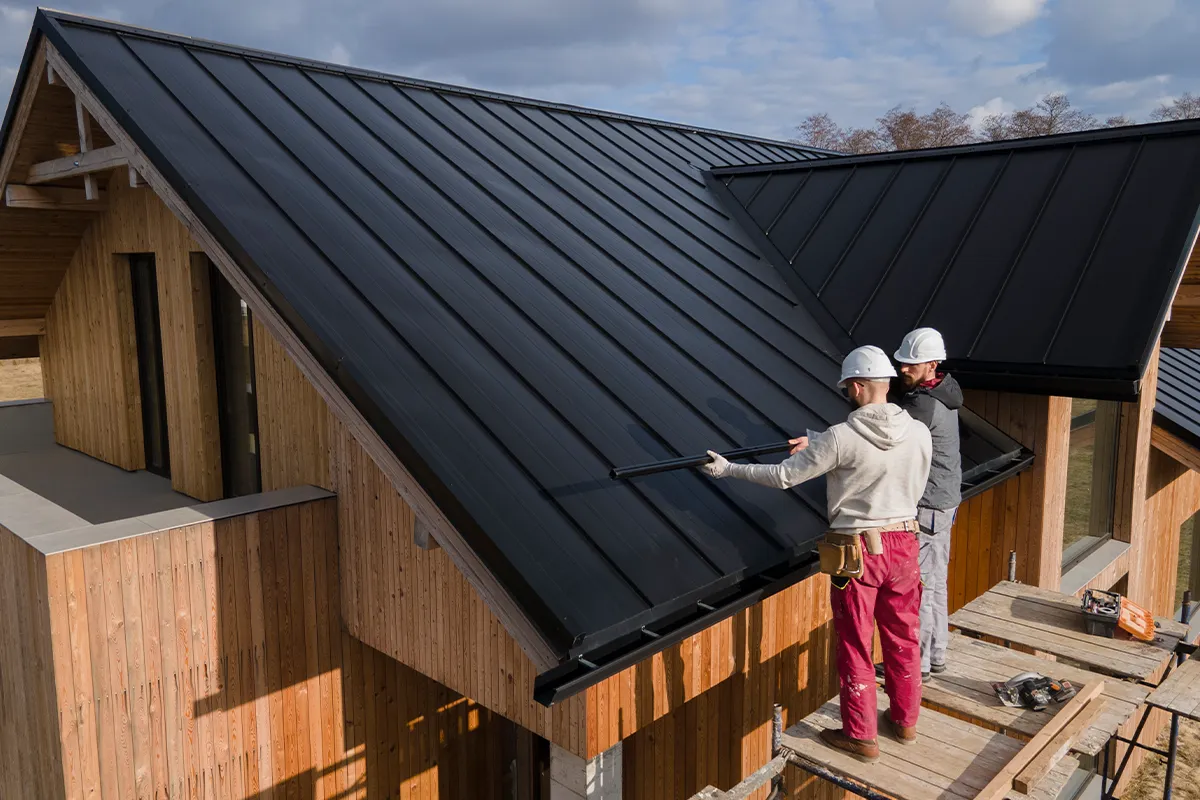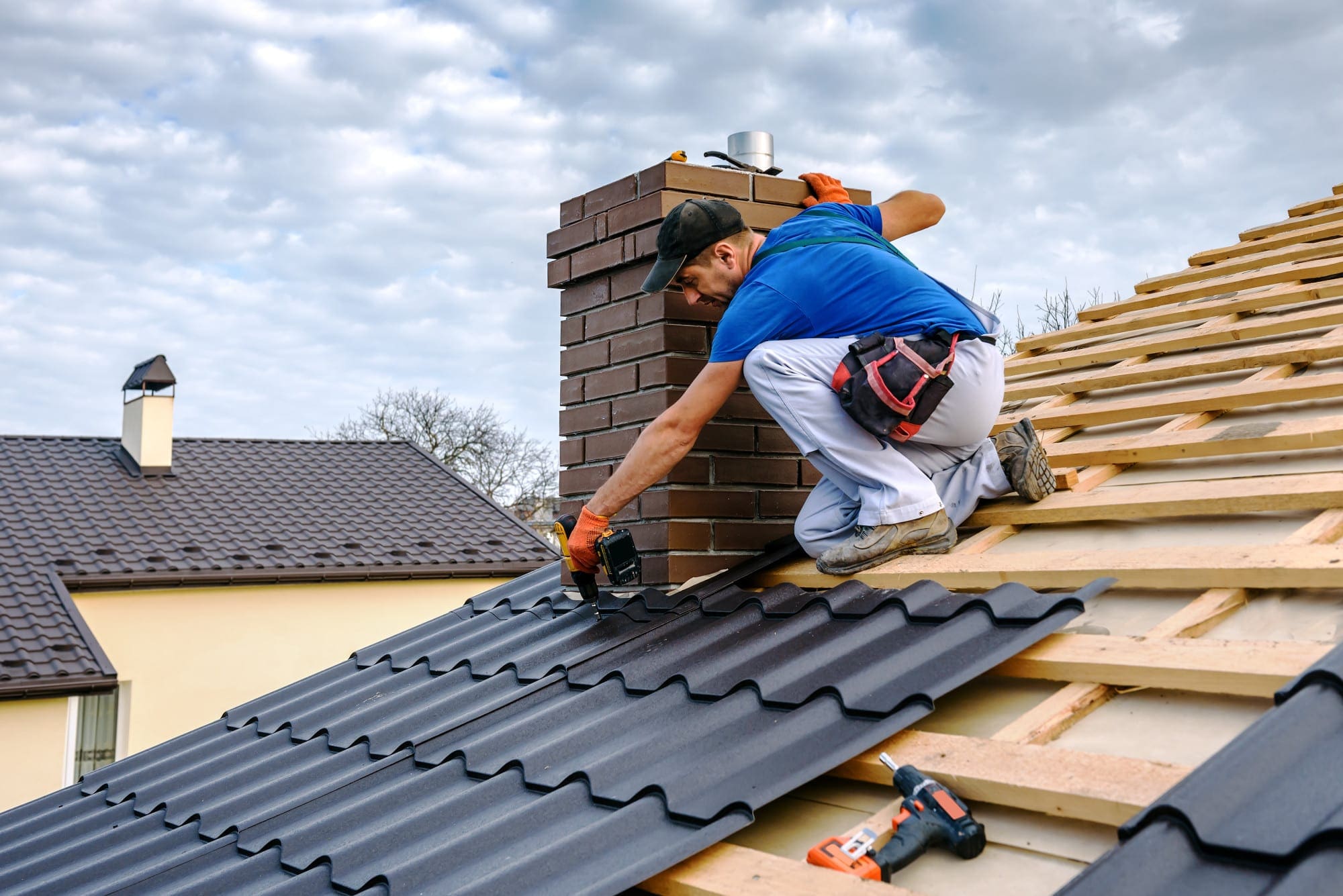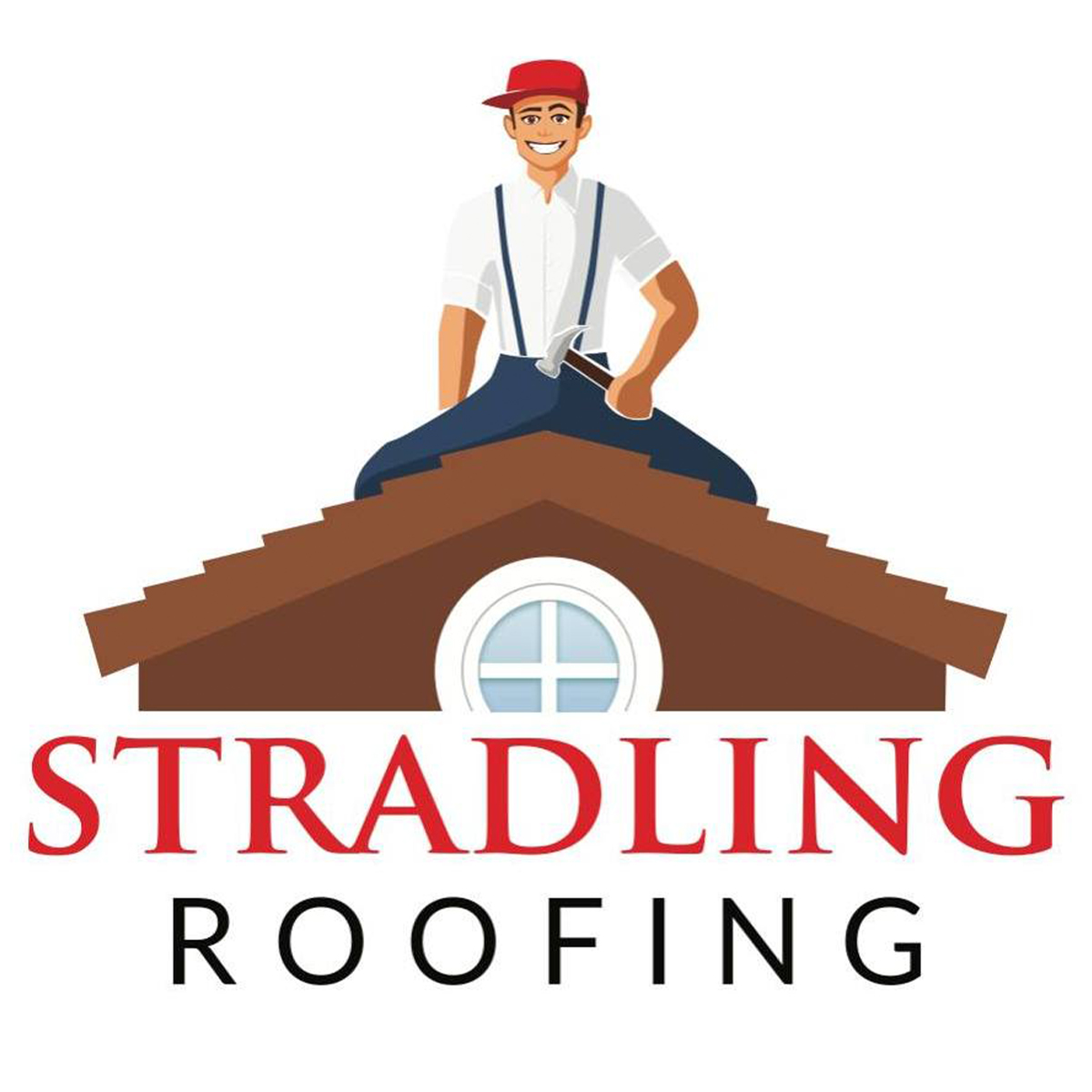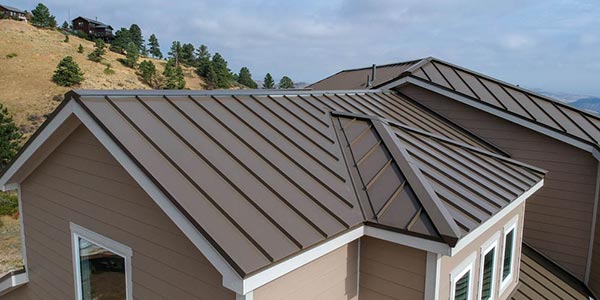Roofing 101: Understanding Arizona’s Unique Climate Challenges
Roofing in Arizona presents unique challenges due to its harsh desert climate. Understanding these challenges is crucial for ensuring your roof performs well and lasts long in the Arizona sun. Here’s a comprehensive guide to navigating roofing in Arizona:
Intense Sun Exposure
Arizona experiences abundant sunshine throughout the year, leading to intense UV radiation exposure. This constant sun exposure can cause roofing materials to deteriorate quickly. Choose materials with high UV resistance, such as metal roofing, clay tiles, or asphalt shingles with reflective coatings. Metal roofing, for instance, not only withstands UV rays but also reflects sunlight, keeping your home cooler and reducing energy costs. Consider investing in cool roof technologies that meet ENERGY STAR® guidelines to maximize energy savings and minimize environmental impact.

Extreme Heat
Arizona’s summers bring scorching temperatures, often exceeding 100°F (37°C). High temperatures can cause roofing materials to expand and contract, leading to cracks and damage over time. Opt for heat-resistant materials that can withstand thermal expansion, such as clay tiles or metal roofing. Clay tiles are particularly popular in Arizona for their ability to dissipate heat quickly and maintain their structural integrity in extreme heat conditions. Additionally, consider installing a radiant barrier under the roof to reduce heat transfer into the attic and living spaces, enhancing indoor comfort and energy efficiency.
Monsoon Season
Arizona’s monsoon season, typically from June to September, brings heavy rains, strong winds, and dust storms. Roofing systems must be able to withstand these intense weather conditions to prevent water infiltration and wind damage. Ensure proper roof flashing, sealing, and gutter systems to manage rainfall effectively. Consider upgrading your gutter system to handle large volumes of water quickly, preventing water pooling and potential leaks during monsoon downpours. Installing impact-resistant roofing materials, such as Class 4 asphalt shingles or metal roofing, can provide added protection against hail and wind-driven debris during monsoon storms.

Dust and Debris
Arizona’s desert environment contributes to dust accumulation on roofs, which can degrade roofing materials and clog gutters. Regular roof inspections and maintenance are essential to remove debris and prevent potential damage. Consider installing gutter guards to minimize debris buildup and ensure proper water drainage during both dry spells and monsoon rains. Implementing a regular cleaning schedule for your roof, including removing debris and inspecting for signs of wear, can extend its lifespan and maintain its aesthetic appeal.
Roof Ventilation
Proper roof ventilation is crucial in Arizona’s climate to reduce heat buildup in attics and lower cooling costs. Ensure your roof is equipped with adequate vents or ridge vents to promote airflow and prevent moisture buildup, which can lead to mold and mildew growth. Consider installing solar-powered attic fans or vented ridge caps to enhance ventilation and improve energy efficiency in your home. Proper ventilation not only helps regulate indoor temperatures but also extends the lifespan of roofing materials by reducing heat-induced deterioration and moisture-related damage.

Impact of UV Radiation
UV radiation not only affects roofing materials but also accelerates the aging process. Choose roofing materials with UV-resistant coatings or opt for light-colored roofs that reflect sunlight, reducing heat absorption and cooling costs. Reflective roof coatings, such as elastomeric coatings, can enhance UV resistance and extend the lifespan of your roof by reducing thermal stress and UV degradation. Consider applying a UV-resistant sealant to protect roofing materials from sun damage and maintain their appearance and performance over time.
Choosing the Right Roof ing Material
Selecting the right roofing material is essential for durability and energy efficiency in Arizona. Consider options like:
Metal Roofing: Durable, heat-resistant, and long-lasting. Metal roofs are ideal for Arizona’s climate due to their ability to reflect sunlight and withstand thermal expansion. Choose high-quality metal roofing materials, such as standing seam panels or corrugated metal sheets, for maximum durability and aesthetic appeal.
Clay or Concrete Tiles: Excellent heat resistance and aesthetic appeal. Clay tiles, in particular, have been used for centuries in desert regions for their ability to dissipate heat quickly and provide natural insulation. Opt for interlocking clay tiles or lightweight concrete tiles that offer superior thermal performance and architectural versatility.
Asphalt Shingles with Reflective Coatings: Cost-effective and available in reflective options. Reflective asphalt shingles can help reduce cooling costs by reflecting sunlight away from your home. Look for ENERGY STAR® rated asphalt shingles that meet industry standards for energy efficiency and environmental sustainability.
Foam Roofing: Provides excellent insulation and reflects UV rays. Spray foam roofing creates a seamless, energy-efficient barrier that can improve indoor comfort and reduce energy consumption. Consider installing a sprayed polyurethane foam (SPF) roofing system that offers superior insulation properties and long-term performance in Arizona’s climate.

Professional Installation and Maintenance
Ensure your roof is installed by licensed and experienced professionals familiar with Arizona’s climate challenges. Professional installation not only ensures proper roof performance but also validates warranties and protects your investment. Schedule regular roof inspections and maintenance, including checking for cracked tiles, loose shingles, and worn-out sealants, to address issues promptly and extend your roof’s lifespan. Consider hiring a certified roofing contractor who specializes in desert roofing systems and can recommend tailored solutions for your home’s specific needs and budget.
Energy Efficiency Considerations
Incorporate energy-efficient roofing practices to reduce cooling costs in Arizona’s hot climate. Options include cool roofs that reflect sunlight and reduce heat absorption, as well as insulated roofing materials that enhance thermal efficiency. Consider upgrading attic insulation and installing radiant barriers to further improve energy efficiency and indoor comfort. Explore tax incentives and rebates available for energy-efficient roofing upgrades and consult with a certified energy auditor to assess your home’s energy performance and identify cost-effective solutions for reducing energy consumption and environmental impact.

Compliance with Building Codes
Adhere to local building codes and regulations when installing or repairing your roof in Arizona. Codes often include requirements for wind resistance, fire safety, and energy efficiency, ensuring your roof meets necessary standards for durability and safety. Work with a reputable roofing contractor who is knowledgeable about local building codes and can recommend appropriate roofing materials and installation practices for your area. Obtain necessary permits and inspections for roof construction or replacement projects to ensure compliance with regulatory requirements and avoid potential penalties or delays.
Navigating roofing in Arizona requires understanding and preparing for the unique climate challenges the state presents. By choosing the right roofing materials, ensuring proper installation and maintenance, and considering energy-efficient practices, you can protect your home and prolong your roof’s lifespan in Arizona’s harsh desert environment. Stay proactive with inspections and repairs to address issues promptly and maintain your roof’s integrity against the sun, heat, monsoon storms, dust, and debris. With careful planning and professional guidance, your roof can withstand Arizona’s extreme conditions and provide lasting protection for years to come.


Recent Comments